
The Morozov family was known as one of the wealthiest in the Russian Empire. Savva Timofeyevich Morozov, who ran the family textile business in the late 19th and early 20th centuries, was also a major patron of the arts. It was on his money that the Moscow Art Theater existed and the theater building was built. However, the merchant donated money not only to the arts, but also to the revolution.
Morozov received an excellent education and studied chemistry at Cambridge, where he was going to defend his thesis. But, family circumstances forced him to return home: the health of his father was rapidly deteriorating. Savva was forced to immerse himself in running the family business and to forget about a career as a scientist.
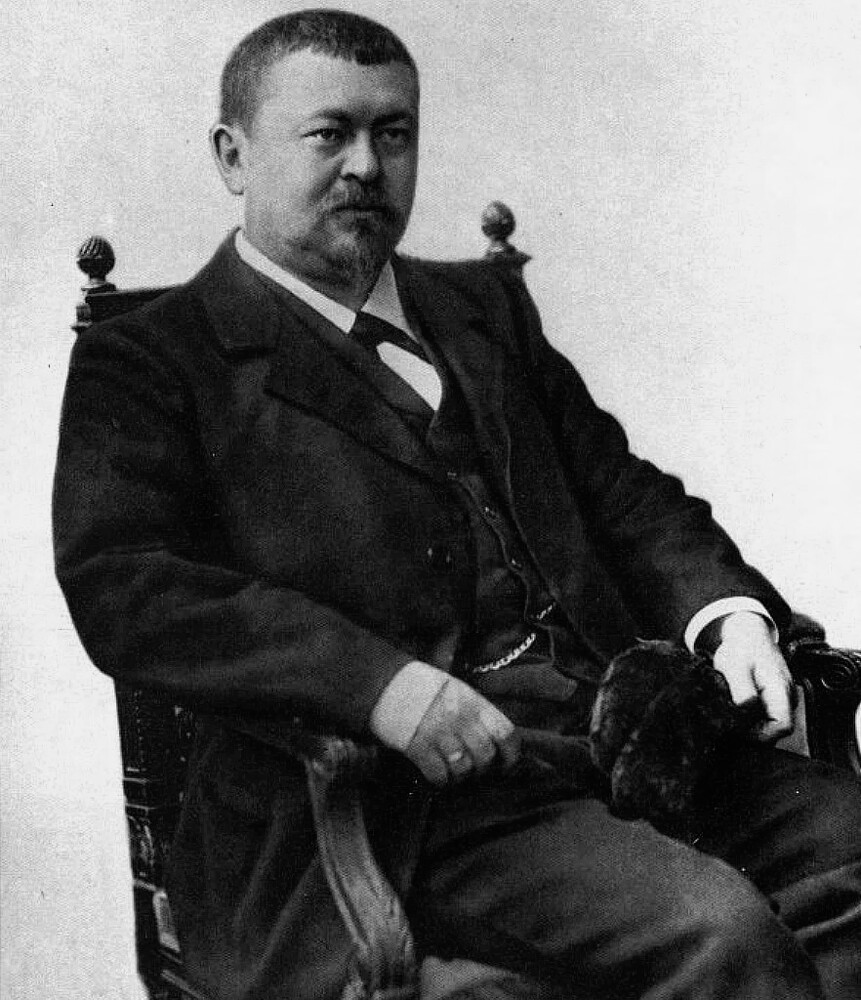
Savva Morozov.
Public domainMorozov took a completely new approach to business and the transformation of textile production began. Savva ordered the latest equipment from abroad, built factories according to the latest scientific and technological standards, built quite comfortable brick barracks for the workers with his own money and encouraged their desire for education. The best students of training courses were sent for internships to England and Germany. And wages at Nikolskaya manufactory were higher than at similar enterprises.
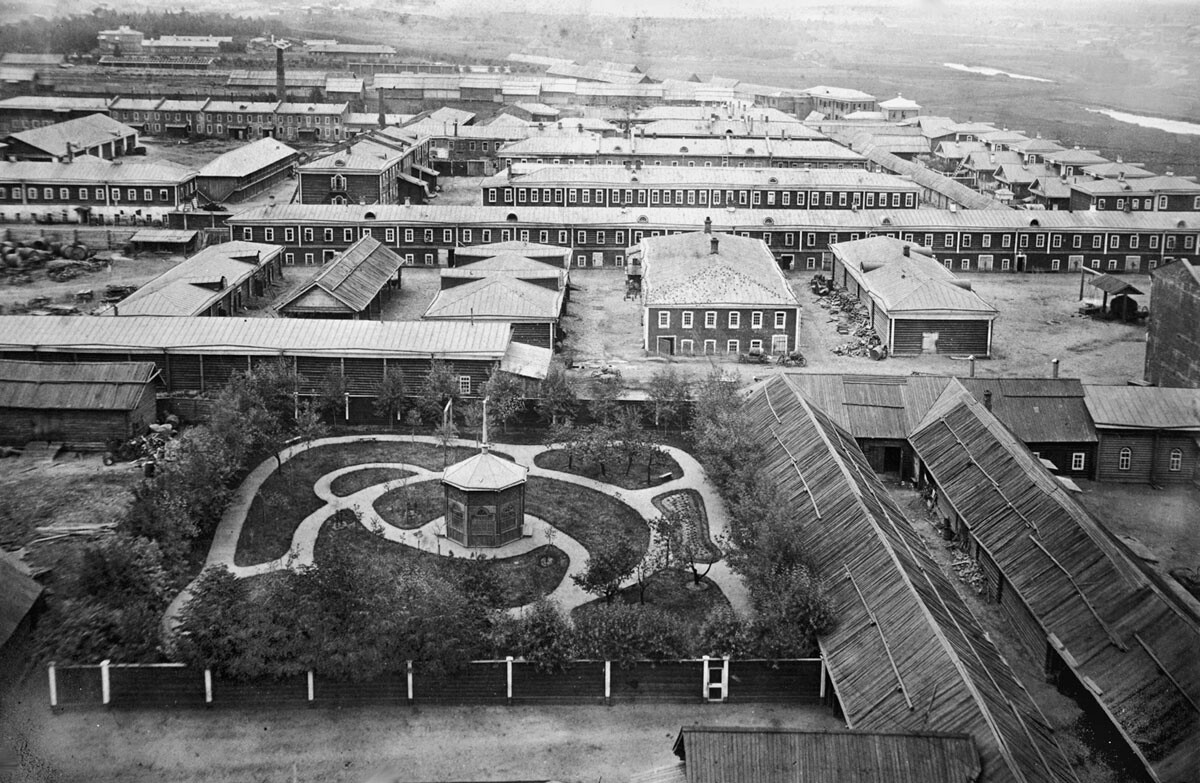
Nikolskaya manufactory.
Public domainHowever, Morozov’s interests were not limited to his economic activities. He donated large sums for charity and was an outstanding patron of the arts. It was to him that the famous later Moscow Art Theater owed its existence. Since his youth, Morozov passionately loved theater and supported a number of such institutions in Moscow and St. Petersburg and even created a theater for his workers. In addition, Morozov liked the idea of Konstantin Stanislavsky and Vladimir Nemirovich-Danchenko, the founders of the Moscow Art Theater, of making theater accessible to all and staging plays that would reflect the truth of modern life or “the noblest modern ideas”. Morozov donated 10 thousand rubles to kickstart the operation of the theater – a huge amount for those times, which only increased over time, because the Moscow Art Theater ended up becoming Morozov’s lifelong business.
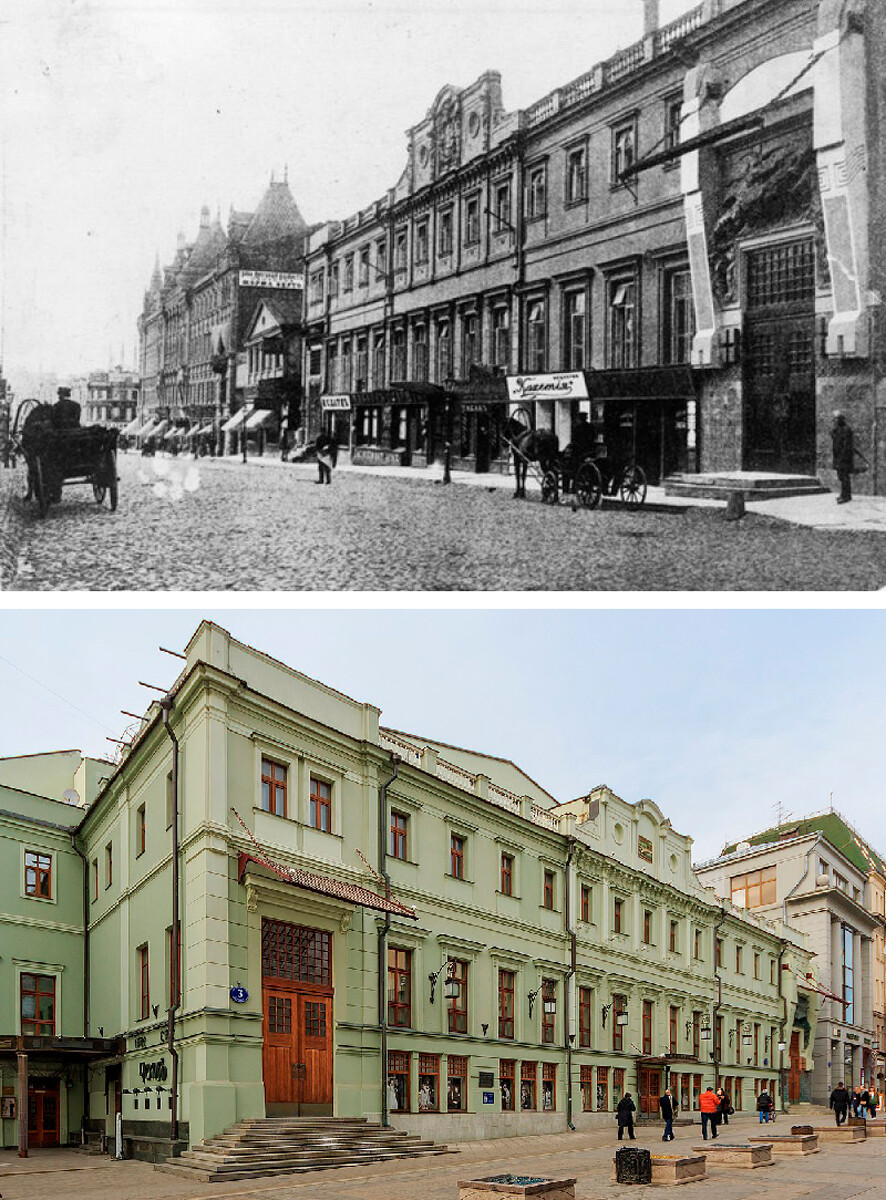
The Moscow Art Theater in Chamberlain Lane in Moscow in 1902-1905 and now.
Moscow Art Theater Museum/Russia in photoSoon after joining the shareholders of the Moscow Art Theater, Morozov had an additional, huge item of expenditure – assistance to revolutionaries. This happened after his acquaintance with an actress named Maria Andreeva. According to the recollections of contemporaries, Andreeva was very beautiful and talented and very few people knew that, from the beginning of 1897, Andreeva was fascinated by revolutionary ideas and, by the time of the first premiere at the Moscow Art Theater, she was already a devout Marxist.
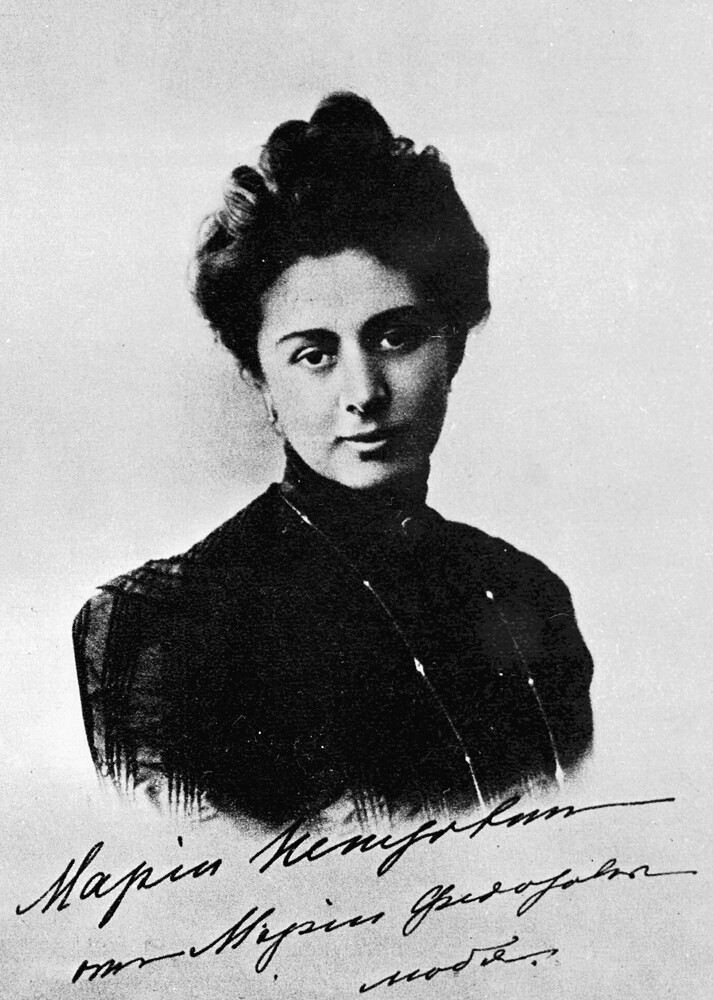
Maria Andreeva.
SputnikBy the time he met Andreeva, Morozov’s relationship with his wife had completely broken down and an affair began between him and the actress. Although Andreeva always emphasized that she and Morozov were connected only by strong friendship, the merchant’s friend Dmitry Olsufyev wrote in his memoirs: “It was known in Moscow that in all this fascination [for the Artistic Theater], there was a female influence of one of the company members.” Stanislavsky, in a personal letter to Andreeva, reproached her for abusing Morozov’s trust: “Savva Timofeyevich’s relationship to you is exceptional. This is the kind of relationship for the sake of which one breaks one’s life and sacrifices oneself and you know this and treat it with care and reverence. But, do you realize what blasphemy you come to in those moments when you are possessed by the ‘actress’? […] You are boasting publicly in front of strangers that the painfully jealous Zinaida Grigorievna seeks your influence over her husband…”
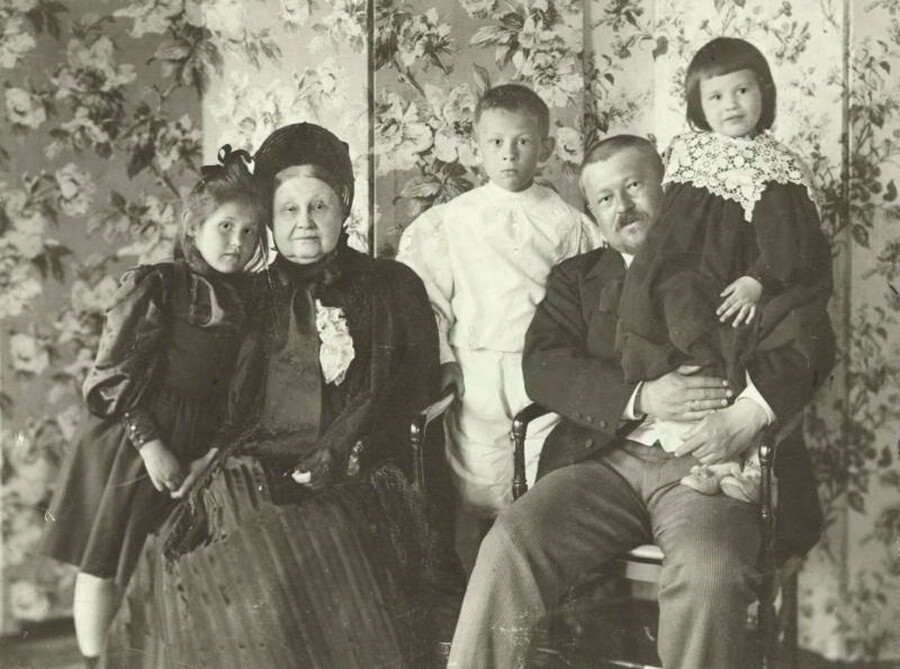
Savva Morozov with his mother and kids, 1897-1898.
МАММ /МДФ/Russia in photoMorozov became acquainted with the Marxists through Andreeva and, at her request, began providing tremendous support to them: the merchant bailed out those arrested, bought clothes and food for those exiled to Siberia – tens of thousands of rubles were spent on everything. According to the memoirs of Soviet writer Maxim Gorky, Andreeva’s future husband, Morozov also gave 24,000 a year to the Bolshevik newspaper ‘Iskra’. Sergei Witte, chairman of the Council of Ministers, claimed in his memoirs that the industrialist had given several million rubles to the revolutionaries. For comparison, the building of the Moscow Art Theater in Chamberlain Lane in Moscow, also built by Morozov, cost about 300 thousand rubles. The merchant was under the influence of Andreeva until his death in 1905 – by that time, the actress had already lived with Maxim Gorky for two years.
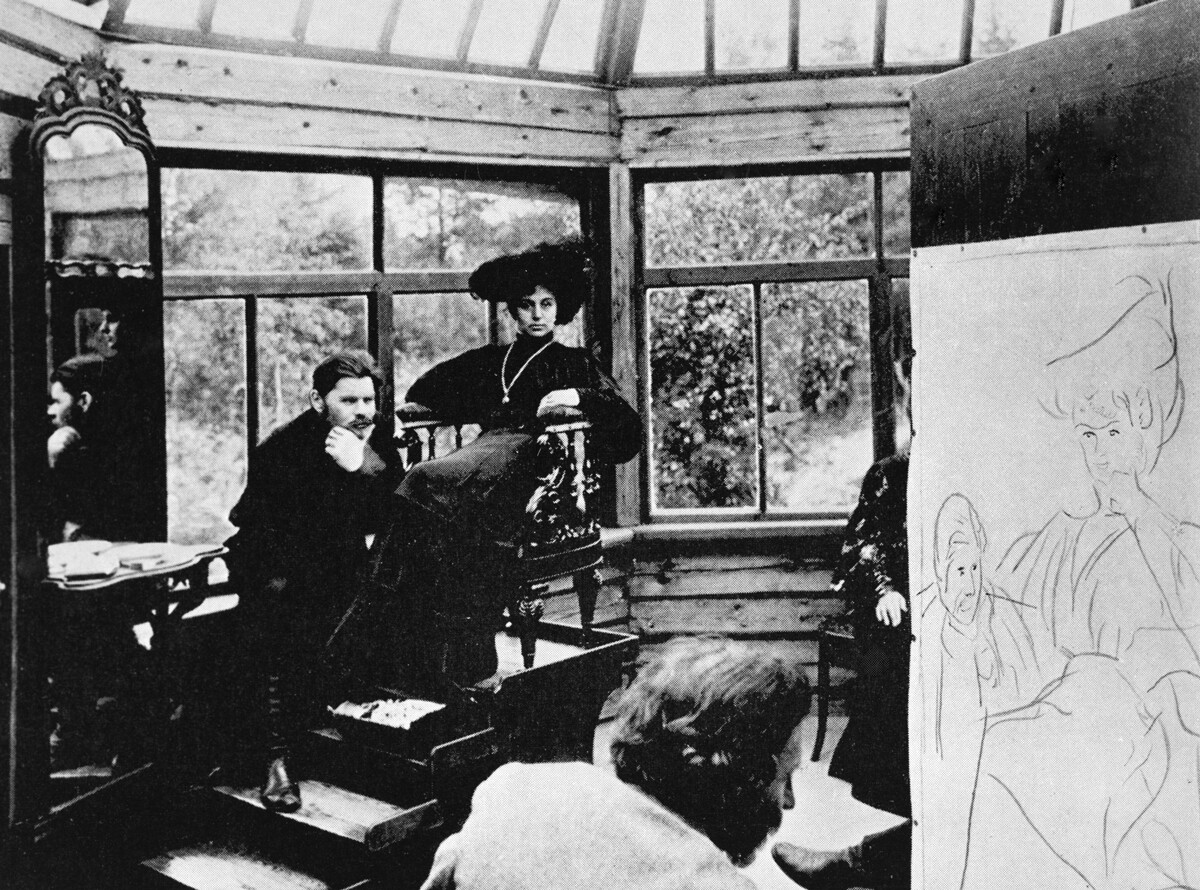
Maria Andreeva and Maxim Gorky posing for the artist Ilya Repin.
SputnikSavva’s infatuation with the Bolsheviks ended after they, despite the progressive nature of Morozov’s factories and his enormous monetary support of the revolution, went on strike at his factory in Orekhovo-Zuevo. Savva never fully recovered from the shock.
In 1905, there were even rumors of Morozov’s insanity floating around Moscow. Olsufyev wrote that, after the strike, he found his friend completely depressed and confused. In April of that year, at the insistence of his wife and mother, a panel of doctors was convened, which concluded that Savva had “a severe general nervous disorder, expressed in states of excessive excitement, anxiety, insomnia, a depressed state, bouts of longing, etc.”
But, it is unlikely that he was seriously ill – no one suspended him from his position as director of the manufactory and he successfully performed his duties. These inconsistencies gave rise to the version that Morozov used his illness to try to get rid of the Bolsheviks, who continued to extort money from him and threaten him. And this version is not baseless, Gorky wrote to a fellow party member: “If you have any news about Leonid, the ‘father’, and Muscovites in general – pass it on in words or a letter, I am worried… There are fears for ‘father’ – in our internecine times, how long before someone splits his skull open?” The Bolsheviks called Morozov ‘father’. A few days after the medical consultation, the merchant and his wife went abroad, officially – to improve Morozov's health.
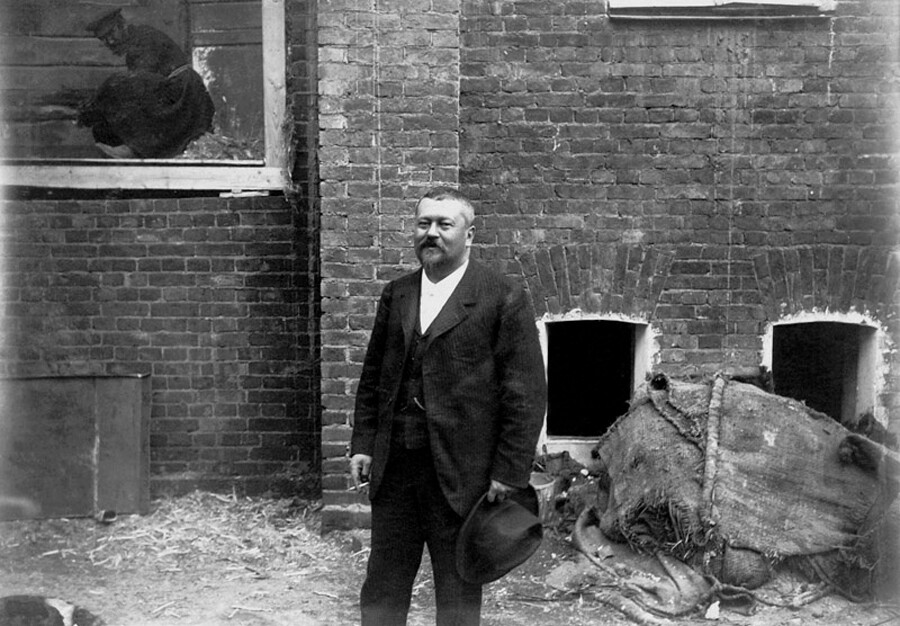
Savva Morozov on the Moscow Art Theater's construction site.
Moscow Art Theater Museum/Russia in photoThere is a very important event in the mysterious story of Morozov’s death. In 1904, he insured his life for 100 thousand rubles – and gave the insurance policy to the bearer, Maria Andreeva. 100 thousand was a very considerable sum for the Bolsheviks.
Morozov’s trip abroad lasted less than a month. On May 13, he shot himself in a hotel room in Cannes. According to the evidence of relatives, on that day, the merchant was in a great mood, proposed to his wife to go to Monte Carlo the next day, asked for strawberries and cream for lunch – making plans and, to all appearances, not even thinking about his imminent death. At about four o’clock in the afternoon, Morozov’s wife heard a shot and, running into the room, she testified that she saw a man running out the window. All that was left was a note saying: “Please don’t blame anyone for my death.” It was without a date or signature, but the investigation still ruled Savva’s death a suicide. The merchant’s relatives did not agree with the investigation and believed that the industrialist was killed by the Bolsheviks.
Maria Andreeva received an insurance of 100,000, 60% of which she gave to the Bolshevik Party. Neither she nor Gorky went to Savva’s funeral.
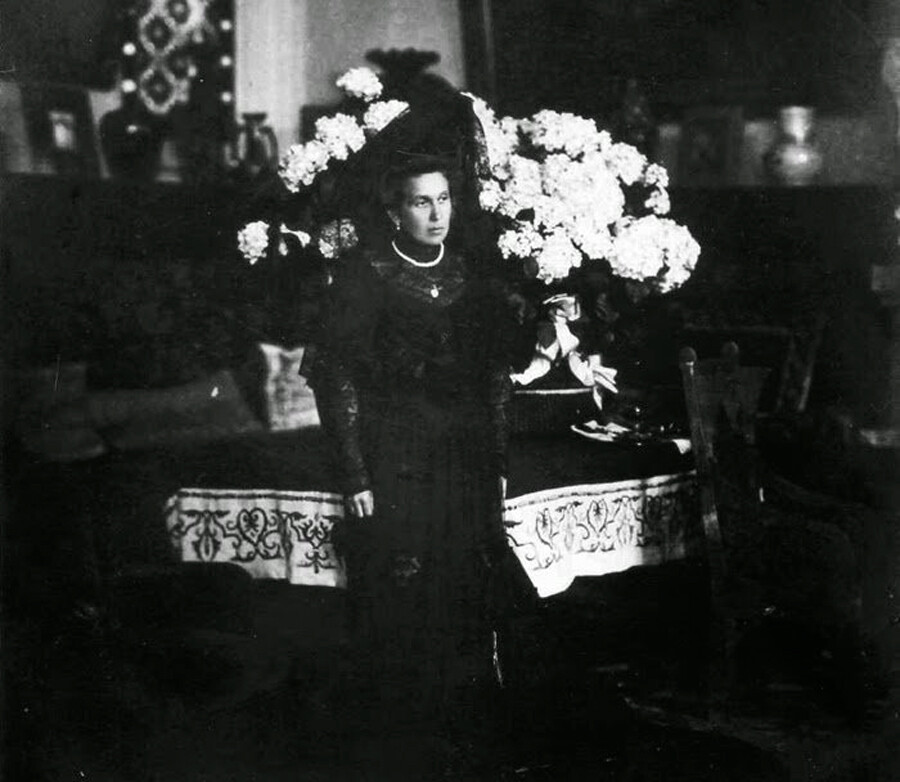
Zinaida Morozova in days of mourning.
Public domainDear readers,
Our website and social media accounts are under threat of being restricted or banned, due to the current circumstances. So, to keep up with our latest content, simply do the following:
If using any of Russia Beyond's content, partly or in full, always provide an active hyperlink to the original material.
Subscribe
to our newsletter!
Get the week's best stories straight to your inbox